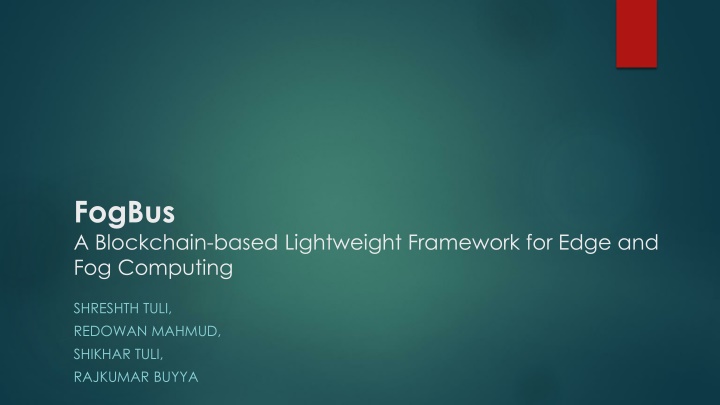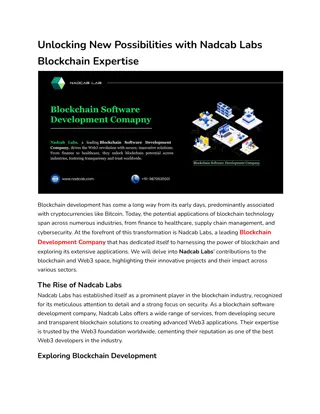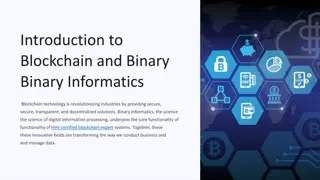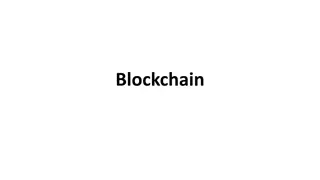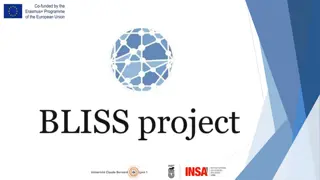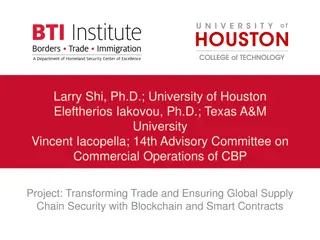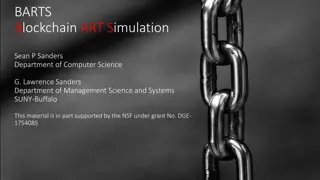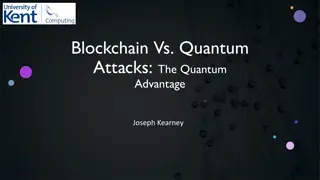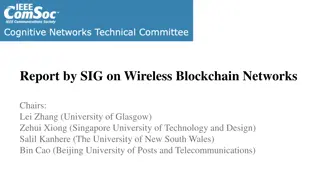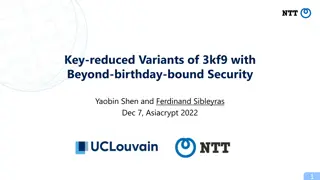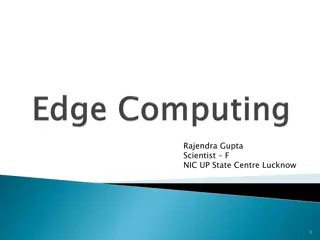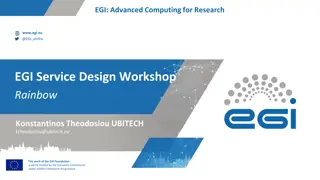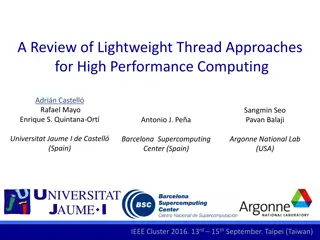FogBus: A Blockchain-based Lightweight Framework for Edge and Fog Computing
Internet of Things (IoT) connects sensors to the global Internet, leading to network congestion in Cloud datacenters. Fog and Edge computing paradigms utilize edge resources for real-time IoT applications. FogBus integrates IoT-Fog and Cloud, utilizing hardware instruments like IoT devices, Fog Gateway Nodes, and Fog Computational Nodes to extend resources from Cloud datacenters when necessary.
Download Presentation

Please find below an Image/Link to download the presentation.
The content on the website is provided AS IS for your information and personal use only. It may not be sold, licensed, or shared on other websites without obtaining consent from the author.If you encounter any issues during the download, it is possible that the publisher has removed the file from their server.
You are allowed to download the files provided on this website for personal or commercial use, subject to the condition that they are used lawfully. All files are the property of their respective owners.
The content on the website is provided AS IS for your information and personal use only. It may not be sold, licensed, or shared on other websites without obtaining consent from the author.
E N D
Presentation Transcript
FogBus A Blockchain-based Lightweight Framework for Edge and Fog Computing SHRESHTH TULI, REDOWAN MAHMUD, SHIKHAR TULI, RAJKUMAR BUYYA
Introduction Internet of Things (IoT) paradigm Connects different sensors to the global Internet for exchanging data. Cloud The fundamental computing paradigm to deal with distributed IoT devices. When a large number of IoT devices simultaneously transferring the data to Cloud datacenters: Network congestion occurs. To overcome these limitations of Cloud-centric IoT model, Fog and Edge computing paradigms are emerged. Prefer to utilize edge resources for executing real-time IoT applications
Introduction Potential edge resources : Smart devices with computing processors such as Raspberry Pi devices, personal computers, mobile phones, network switches, routers and micro-datacenters. Fog computing An intermediate layer between IoT enabled systems and Cloud computing. Fog nodes The computing instances of Fog computing Fog nodes are heterogeneous.
FogBus Framework High level view of integrating IoT-Fog and Cloud through FogBus framework
Hardware Instruments IoT devices: Sensors that perceive the external environment Actuators that convert any given command to physical actions. Fog Gateway Nodes (FGN): Entry points of distributed computing infrastructure. User interfaces of applications Data filtration Organize data in a general format. Aggregate the data received from different sources
Hardware Instruments Fog Computational Nodes (FCN): FCNs are heterogeneous in terms of capacity and resource architecture. They are equipped with processing cores, memory, storage and bandwidth. Based on these operations, FCNs can act in three different roles: Broker nodes : Distributes the computational tasks over multiple FCNs and monitors, synchronizes and coordinates their activities. General Computing Nodes (GCNs): For general computing purposes and accessible via broker nodes. A general computing node can simultaneously serve multiple broker nodes. Repository nodes: Manage distributed database to facilitate data sharing, replication, recovery and secured storage. Preserve some intermediate data during application execution
Hardware Instruments Cloud datacenters: When Fog infrastructure becomes overloaded FogBus extends resources from Cloud datacenters to execute back-end IoT applications.
Software components Interaction of different software components within FogBus framework
Software components 1- Broker Service 1-1- Broker Security Manager: Verifies user s authentication in association with Credential Archive of Repository Service. 1-2- Resource Manager Selecting suitable resources to execute applications
Software components 1- Broker Service 1-3- Data Manager: Receives the sensed and preprocessed data from the IoT devices Aggregate data from multiple sources and calibrate data receiving frequency according to the context. 1-4- Cloud Integrator: All interactions of FogBus framework with Cloud are handled by Cloud Integrator
Software components 2- Repository Service 2-1-Credential Archive: Containing users authentication credentials 2-2- Application Catalogue: Maintaining the details including their operation, execution and programming model. 2-3- Data Container: Data received from IoT devices is stored in Data container so that it can be used for long term analysis 2-4- Cloud Dilator: This component facilitates other software components to interact with Cloud
Software components 3- Computing Services 3-1- Executor Security Manager: The secured interactions of an FCN with others are managed by the Executor Security Manager. 3-2- Resource Monitor: Both busy and idle status of computing resources are monitored by this component. 3-3- Application Executor Allocates resources for different applications on corresponding FCN. This component periodically informs the status of resources to the Resource Monitor.
Network Structure Network Structure of FogBus framework
Network Structure The FogBus networking should be secured, scalable and fault tolerant. 1- Topology: The master-worker topology is applied in designing the network structure for FogBus framework. Broker nodes are the masters Other FCNs function as the workers
Network Structure 1- Topology: Being master, a broker node receives the data stream and user information from the FGNs and discovers workers for processing and storing them. To foster data sharing and reduce overhead from the masters, worker nodes also communicate among themselves under the explicit supervision of the masters.
Network Structure 2- Scalability: Scale-up the number of active Fog nodes according to context of the system. An FCN connected with the same WLAN can simply become a worker by making itself accessible to the corresponding master The FogBus supports coexistence of multiple masters in a WLAN.
Network Structure 3-Reliability: The facility of running multiple masters implicitly eradicates the inherent single point failure limitation of master-worker model within FogBus. The framework allows each master to replicate their image over one of its worker nodes.
A Case Study : Sleep Apnea Analysis Sleep Apnea is a disease in which air stops flowing into the lungs for 10 seconds or even longer period of time during sleep. if oxygen saturation becomes significantly low for aged and asthma patients, Sleep Apnea could provoke brain stroke. To determine the intensity of Sleep Apnea, it is required to monitor oxygen saturation rate in blood time to time. If the intensity becomes higher than normal, it is recommended to consult with the Doctor before it occurs other complications.
A Case Study : Sleep Apnea Analysis Real-world implementation of FogBus-based Sleep Apnea analysis
A Case Study : Sleep Apnea Analysis Session Screen of the android interface
A Case Study : Sleep Apnea Analysis
